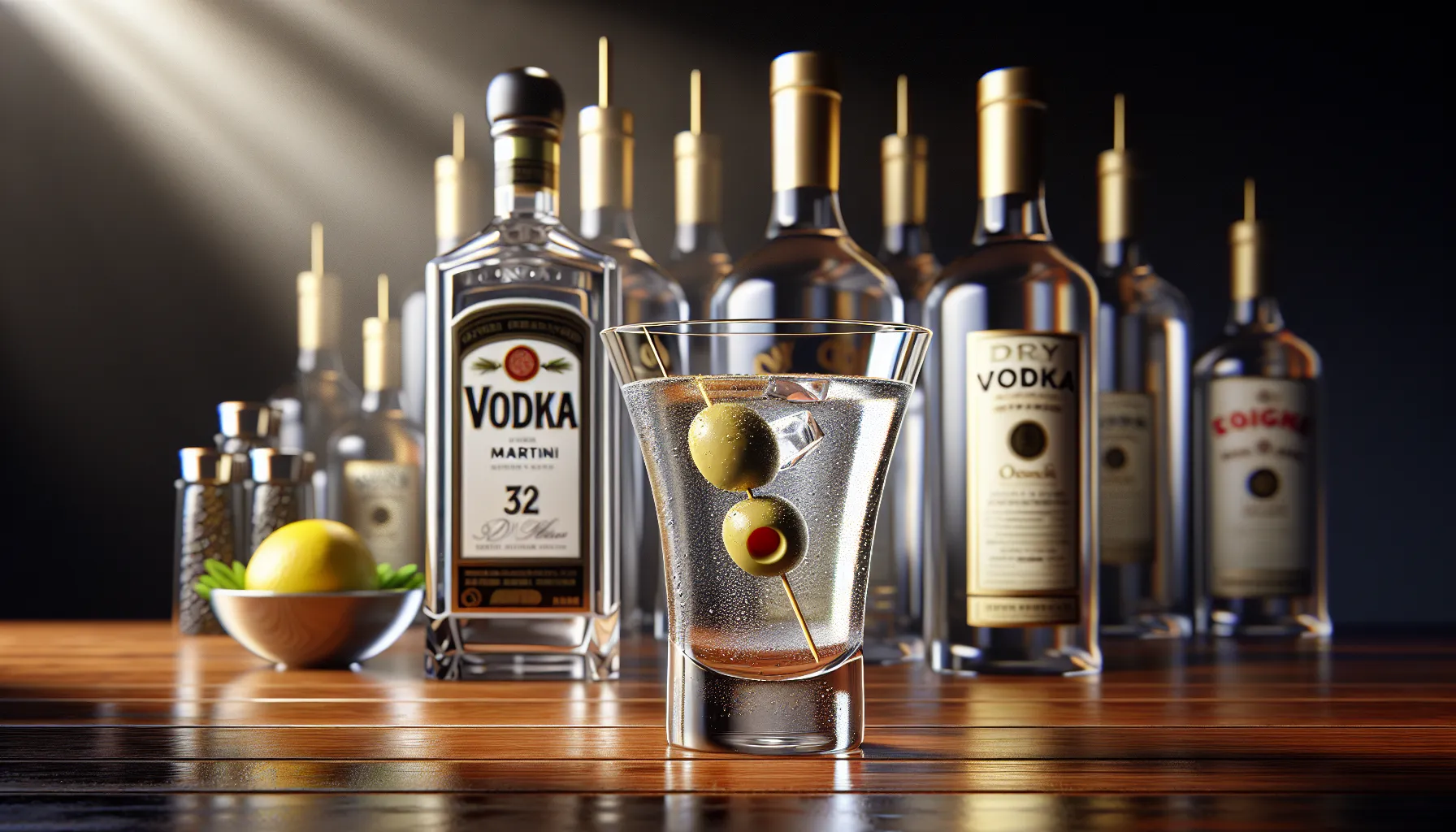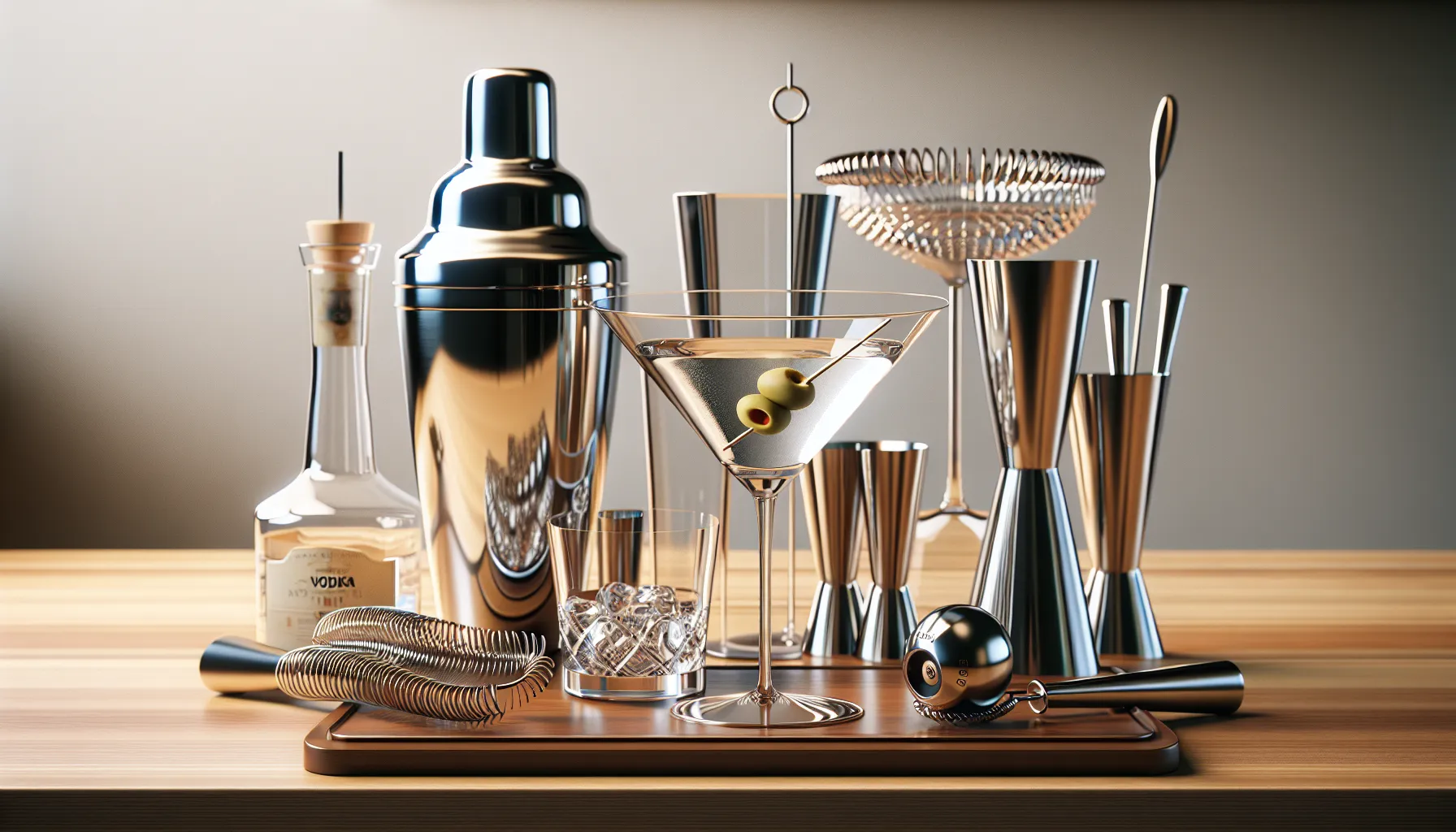Key Takeaways
- A vodka martini is a simple yet sophisticated cocktail made with vodka and dry vermouth, served chilled and typically garnished with a lemon twist or an olive.
- High-quality ingredients like premium vodka, fresh vermouth, and top-notch garnishes are essential for the best flavor.
- Tools like a shaker, mixing glass, strainer, and chilled martini glass are key to achieving professional results.
- Customize your vodka martini by adjusting the vermouth ratio, experimenting with garnishes, or adding olive brine to make it “dirty.”
- Proper technique, such as stirring or shaking for the right amount of time, and chilling the glass, ensures a balanced and refreshing cocktail.
- Avoid common mistakes like skipping the glass chilling step, using poor-quality ingredients, or over-diluting the drink.
There’s something undeniably classy about sipping a perfectly made vodka martini. It’s one of those cocktails that feels timeless, effortlessly combining simplicity and sophistication. Whether you’re winding down after a long day or hosting friends for a chic evening, a vodka martini always sets the right tone.
What Is A Vodka Martini?
A vodka martini is a crisp, straightforward cocktail that highlights the clean flavor of vodka. Traditionally, it’s made with vodka and dry vermouth, stirred or shaken with ice, and served in a chilled martini glass. The drink is often garnished with a twist of lemon or an olive, which adds subtle aromatic notes.
Unlike the gin martini, which has herbal complexity, the vodka martini focuses on the spirit’s purity. Its minimal ingredients allow customization, such as adjusting the vermouth ratio or adding a splash of olive brine for a dirty vodka martini. This makes it a versatile and highly personalized drink.
Ingredients You Will Need

A vodka martini relies on a few simple ingredients, but their quality impacts the final cocktail’s taste. Here’s how to select each component thoughtfully.
Choosing The Right Vodka
I prioritize smooth, high-quality vodka for its clean flavor. Top-shelf brands like Grey Goose, Belvedere, or Tito’s often work well. For a more affordable option, I recommend Absolut or Smirnoff, which maintain a balance of quality and cost. The vodka’s clarity should shine as it’s the star of the drink.
Selecting The Vermouth
Dry vermouth adds depth to the martini. I suggest using fresh, well-stored vermouth like Noilly Prat or Dolin Dry for optimal results. Vermouth oxidizes quickly after opening, so I refrigerate mine and use it within 1-2 months to keep the flavors intact.
Essential Garnishes
Classic garnishes include lemon twists or green olives. I choose firm, briny olives or fresh, aromatic lemons to enhance the drink’s presentation and aroma. If preparing a dirty martini, using a high-quality olive brine elevates the flavor without overpowering the vodka.
Tools Required To Make A Vodka Martini

Proper tools ensure a smooth martini-making process and consistent results.
- Cocktail shaker: Essential for mixing ingredients with ice, especially if you prefer a shaken martini. Look for a shaker with a built-in strainer.
- Mixing glass: Ideal for stirring a martini if you prefer a smoother, less aerated drink. A large, sturdy glass works best.
- Bar spoon: Perfect for gently stirring the vodka and vermouth without over-diluting. Use a long-handled spoon for better control.
- Jigger: Ensures precise measurement of vodka and vermouth, with typical options measuring 1.5 oz on one side and 0.75 oz on the other.
- Strainer: Necessary for separating the ice from the liquid when pouring into the glass if you’re using a mixing glass.
- Martini glass: A chilled martini glass enhances presentation and keeps the drink cold.
Optional tools include tongs for handling garnishes like olives and a small zester for creating lemon twists. A napkin or coaster can complete the setup.
Step-By-Step Guide On How To Make A Vodka Martini

Crafting the perfect vodka martini involves attention to detail and the right techniques. Follow these steps for a cocktail that’s both elegant and delicious.
Preparing Your Glass
I start by chilling my martini glass to keep the drink crisp and refreshing. Fill the glass with ice water while preparing the martini or place it in the freezer for a few minutes. Discard the ice water or remove the glass from the freezer just before serving.
Measuring And Mixing Ingredients
I measure 2.5 oz of vodka and 0.5 oz of dry vermouth using a jigger for accuracy. Adding the ingredients to either a mixing glass for stirring or a shaker for shaking ensures consistent flavor. For a dirty martini, I add 0.25–0.5 oz of olive brine, adjusting to taste.
Stirring Or Shaking: What You Need To Know
I decide between stirring or shaking based on my preferred texture. Stirring gently with a bar spoon in a mixing glass creates a silky drink, while shaking in a cocktail shaker with ice adds aeration and a slightly frothy texture. Using large ice cubes minimizes dilution during this step.
Straining And Serving Your Martini
I strain the liquid into the chilled martini glass using a fine mesh or Hawthorne strainer to catch ice shards. Lastly, I garnish with a lemon twist or two olives on a cocktail pick, selecting the garnish based on my desired flavor accent.
Tips For Perfecting Your Vodka Martini
Making a vodka martini is as much about personal preference as it is about technique. Small adjustments and avoiding common pitfalls can elevate your cocktail to perfection.
Adjusting The Recipe To Your Tastes
Experimenting with the vermouth ratio can significantly impact the flavor. For a dryer martini, reduce the vermouth to a splash or rinse the glass with it before discarding the excess. If you prefer a smoother sip, increase the vermouth slightly to balance the vodka’s intensity.
Exploring garnish options adds variety. Stick with a classic twist of lemon for citrusy brightness, or choose briny olives for a savory note. Those favoring a dirtier martini can add 0.25 to 0.5 oz of olive brine for extra flavor. Use high-quality garnishes, as they directly influence the overall experience.
Common Mistakes To Avoid
Skipping the glass chilling step affects the drink’s crispness. Always pre-chill your martini glass using ice water or by placing it in the freezer for 5-10 minutes.
Over-diluting can weaken the cocktail’s bold character. Stir or shake for 15-20 seconds with plenty of ice to reach the right chill without watering it down.
Using poor-quality ingredients compromises flavor. Invest in a premium vodka and fresh vermouth while checking expiration dates to ensure a clean, polished taste in your martini.
Conclusion
Making a vodka martini is more than just mixing a drink; it’s about crafting an experience. With the right ingredients, tools, and a little attention to detail, you can create a cocktail that’s as refined as it is personal. Whether you prefer it stirred or shaken, with a lemon twist or an olive, the beauty of a vodka martini lies in its versatility.
So take your time, experiment with what you enjoy, and savor every sip. There’s nothing quite like the satisfaction of creating a perfectly balanced martini that reflects your own taste. Cheers!
Frequently Asked Questions
What is a vodka martini made of?
A vodka martini is made with vodka and dry vermouth, stirred or shaken with ice, and served in a chilled martini glass. It’s typically garnished with a lemon twist or an olive for added aroma and flavor.
Should you stir or shake a vodka martini?
It depends on your preference. Stirring creates a silky, smooth texture, while shaking introduces slight aeration, resulting in a colder, frothier drink. Both methods are widely accepted for vodka martinis.
What type of vodka is best for a vodka martini?
High-quality, smooth vodkas such as Grey Goose, Belvedere, or Tito’s are excellent choices. For budget-friendly options, consider Absolut or Smirnoff to still achieve a crisp and enjoyable cocktail.
How much vermouth should I use in a vodka martini?
The standard ratio is 0.5 oz of dry vermouth to 2.5 oz of vodka. However, you can adjust the vermouth to taste, using less for a drier martini or more for added smoothness.
What garnishes are commonly used for a vodka martini?
The most commonly used garnishes are a twist of lemon, for a zesty aroma, or a briny olive, for a savory touch. For a dirty martini, high-quality olive brine may also be added.
Can I make a vodka martini dirty?
Yes, to make a vodka martini dirty, add a splash of high-quality olive brine to the mix. It adds a salty, savory note and pairs well with an olive garnish.
Why is it important to chill the martini glass?
Chilling the martini glass keeps the drink colder for longer and enhances its crisp, refreshing character. This small step significantly improves the overall experience.
What tools do I need to make a vodka martini?
Essential tools include a cocktail shaker (or mixing glass), a bar spoon, a jigger for measuring, a strainer, and a chilled martini glass. Optional tools include garnish tongs and a zester for lemon twists.
How can I avoid over-diluting my vodka martini?
Avoid over-dilution by limiting the time you stir or shake the drink. Typically, 20-30 seconds is sufficient to chill and mix the ingredients without excessive dilution.
How long can vermouth be stored?
An opened bottle of vermouth should be refrigerated and used within 1-2 months to preserve its flavor. Vermouth loses its freshness over time, so proper storage is essential for a great martini.

